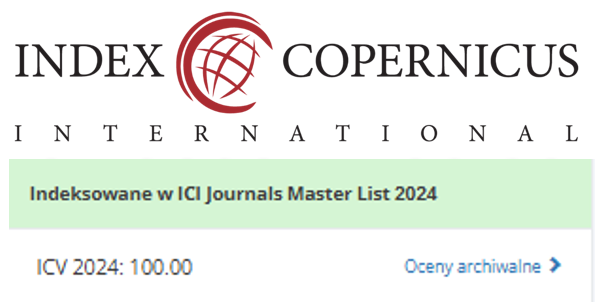Body Mass Index, Glucose, and Triglycerides as Predictors of HbA1c Control in Patients with Type 2 Diabetes Mellitus: A Cross-Sectional Study
DOI:
https://doi.org/10.55018/janh.v7i3.393Keywords:
Diabetes Mellitus, Type 2, Hemoglobin A, Glycosylated, Blood Glucose, Body Mass Index, TriglyceridesAbstract
Background: Type 2 diabetes mellitus (T2DM) is a chronic disease with rising global and national prevalence. Glycemic control, measured by glycated hemoglobin (HbA1c), is essential to prevent complications. Previous studies showed inconsistent findings on the effects of age, gender, body mass index (BMI), and triglycerides on HbA1c levels, with limited use of logistic regression. This study examined the influence of age, gender, BMI, glucose, and triglyceride levels on HbA1c control in Indonesian patients with T2DM.
Methods: A cross-sectional study was conducted using secondary medical records of 55 T2DM patients treated at RA Basoeni Clinic, Mojokerto, Indonesia, in 2024. Inclusion criteria included patients aged ≥18 without anemia or hemoglobinopathy; patients with incomplete data were excluded. HbA1c values were estimated from average fasting and postprandial glucose over the past three months using the American Diabetes Association (ADA) 2019 conversion table. HbA1c status was categorized as controlled (≤6.5%) and uncontrolled (>6.5%). Logistic regression analysis was performed using SPSS version 25.0. The study adhered to STROBE reporting guidelines.
Results: Of the 55 patients, 24 (43.6%) had controlled HbA1c and 31 (56.4%) had uncontrolled HbA1c. Logistic regression showed that BMI (OR=1.192, p=0.047), glucose (OR=1.026, p=0.044), and triglycerides (OR=1.017, p=0.049) significantly predicted HbA1c status. Age (p=0.837) and gender (p=0.884) were not significant predictors. The model explained 68.9% of the variance (Nagelkerke R²=0.689) with an overall classification accuracy of 83.6%..
Conclusion: BMI, glucose, and triglycerides are significant predictors of HbA1c control in T2DM patients, while age and gender are not. To improve glycemic outcomes, clinical management should prioritize weight regulation, glucose monitoring, and triglyceride control.
Downloads
References
Al-Lawati, J. A., N. Barakat, M., Al-Zakwani, I., Elsayed, M. K., Al-Maskari, M., M Al-Lawati, N., & Mohammed, A. J. (2012). Control of Risk Factors for Cardiovascular Disease Among Adults with Previously Diagnosed Type 2 Diabetes Mellitus: A Descriptive Study from a Middle Eastern Arab Population. The Open Cardiovascular Medicine Journal, 6(1), 133–140. https://doi.org/10.2174/1874192401206010133
Alzahrani, S. H., Baig, M., Aashi, M. M., Al-shaibi, F. K., Alqarni, D. A., & Bakhamees, W. H. (2019). Association between glycated hemoglobin (HbA1c) and the lipid profile in patients with type 2 diabetes mellitus at a tertiary care hospital: a retrospective study. Diabetes, Metabolic Syndrome and Obesity: Targets and Therapy, Volume 12, 1639–1644. https://doi.org/10.2147/DMSO.S222271
American Diabetes Association Professional Practice Committee. (2022). Classification and Diagnosis of Diabetes: Standards of Medical Care in Diabetes. Diabetes Care, 45(Supplement_1), S17–S38. https://doi.org/10.2337/dc22-S002
Grundy, S. M. (1998). Hypertriglyceridemia, Atherogenic Dyslipidemia, and the Metabolic Syndrome. The American Journal of Cardiology, 81(4), 18B-25B. https://doi.org/10.1016/S0002-9149(98)00033-2
Jannah, M., Hidayati, P. H., Mulyadi, F. E., Kartika, I. D., & Irmayanti, I. (2024). The Relationship between HbA1c, GDP and Disease Duration on the Occurrence of Diabetic Neuropathy at Ibnu Sina Hospital. Formosa Journal of Science and Technology, 3(8), 1893–1904. https://doi.org/10.55927/fjst.v3i8.11132
Kahn, B. B., & Flier, J. S. (2000). Obesity and insulin resistance. Journal of Clinical Investigation, 106(4), 473–481. https://doi.org/10.1172/JCI10842
Kara, G. M. A., Ngurah Subawa, A. A., Ayu Patria Dewi, P. P., & Diah Dharma Santhi, D. G. (2024). Karakteristik hasil pemeriksaan hemoglobin a1c (Hba1c) dan indeks massa tubuh (IMT) pada pasien diabetes melitus tipe 2 di RSUP Prof. Dr. I.G.N.G. Ngoerah. Intisari Sains Medis, 15(2), 547–551. https://doi.org/10.15562/ism.v15i2.2043
Kautzky-Willer, A., Leutner, M., & Harreiter, J. (2023). Sex differences in type 2 diabetes. Diabetologia, 66(6), 986–1002. https://doi.org/10.1007/s00125-023-05891-x
Kazanskaia, A. N. (2025). Quantitative Research Methods. Neya Global Publishing. https://doi.org/10.64357/quantitative-research-methods-2025
Kerr, A. G., Andersson, D. P., Rydén, M., & Arner, P. (2024). Insulin resistance in adipocytes: Novel insights into the pathophysiology of metabolic syndrome. Clinical Nutrition, 43(2), 468–475. https://doi.org/10.1016/j.clnu.2023.12.012
Maifitrianti, M., Wulandari, N., Haro, M., Lestari, S. F., & Fitriani, A. (2020). Glycemic Control and Its Factor in Type 2 Diabetic Patients in Jakarta. Indonesian Journal of Clinical Pharmacy, 9(3), 198. https://doi.org/10.15416/ijcp.2020.9.3.198
Mullugeta, Y., Chawla, R., Kebede, T., & Worku, Y. (2012). Dyslipidemia Associated with Poor Glycemic Control in Type 2 Diabetes Mellitus and the Protective Effect of Metformin Supplementation. Indian Journal of Clinical Biochemistry, 27(4), 363–369. https://doi.org/10.1007/s12291-012-0225-8
Nattino, G., Pennell, M. L., & Lemeshow, S. (2020). Assessing the goodness of fit of logistic regression models in large samples: A modification of the Hosmer‐Lemeshow test. Biometrics, 76(2), 549–560. https://doi.org/10.1111/biom.13249
Nguyen, C. T., Pham, N. M., Lee, A. H., & Binns, C. W. (2015). Prevalence of and Risk Factors for Type 2 Diabetes Mellitus in Vietnam. Asia Pacific Journal of Public Health, 27(6), 588–600. https://doi.org/10.1177/1010539515595860
Nurkoç, S. G., Atan, Ş., Adalı, M. K., Demir, M., Yavuz, Y. E., Açar, B., Altınsoy, M., Tanboğa, İ. H., & Kahraman, F. (2024). The predictive ability of Controlling Nutritional Status score on in-hospital mortality in patients admitted to coronary care unit. Revista Da Associação Médica Brasileira, 70(12). https://doi.org/10.1590/1806-9282.20240958
Perkumpulan Endokrinologi Indonesia. (2021). Pedoman Pengelolaan dan Pencegahan Diabetes Melitus Tipe 2 Dewasa di Indonesia 2021. Jakarta: PB PERKENI.
Rahmah, D. D., & Karyus, A. (2023). Penatalaksanaan Pasien Wanita 63 Tahun dengan Tuberkulosis Paru dan Diabetes Melitus Tipe 2 Melalui Pendekatan Dokter Keluarga di Puskesmas Susunan Baru. Medical Profession Journal of Lampung, 13(7), 1142–1151.
Sabir, M. S., Hassan, M. M., Malik, M., Saleem, R., Tariq, Z., Zohaib, K., Javaid, M., Malik, A. Y., & Saleem, A. (2023). Diagnostic Accuracy of Fetal Anterior Abdominal Wall Thickness as an Early Sonographic Sign for Diagnosing Gestational Diabetes. Cureus. https://doi.org/10.7759/cureus.46538
Selvin, E., Steffes, M. W., Zhu, H., Matsushita, K., Wagenknecht, L., Pankow, J., Coresh, J., & Brancati, F. L. (2010). Glycated Hemoglobin, Diabetes, and Cardiovascular Risk in Nondiabetic Adults. New England Journal of Medicine, 362(9), 800–811. https://doi.org/10.1056/NEJMoa0908359
Sheng, L., Yang, G., Chai, X., Zhou, Y., Sun, X., & Xing, Z. (2024). Glycemic variability evaluated by HbA1c rather than fasting plasma glucose is associated with adverse cardiovascular events. Frontiers in Endocrinology, 15. https://doi.org/10.3389/fendo.2024.1323571
Sutkovic, J., & Abdic-Nekic, V. (2013). Study Of HbA1c As A Reliable Indicator For Metabolic Syndrome In Non Diabetic Patients. Southeast Europe Journal of Soft Computing, 2(1). https://doi.org/10.21533/scjournal.v2i1.41
Tham, K. W., Abdul Ghani, R., Cua, S. C., Deerochanawong, C., Fojas, M., Hocking, S., Lee, J., Nam, T. Q., Pathan, F., Saboo, B., Soegondo, S., Somasundaram, N., Yong, A. M. L., Ashkenas, J., Webster, N., & Oldfield, B. (2023). Obesity in South and Southeast Asia—A new consensus on care and management. Obesity Reviews, 24(2). https://doi.org/10.1111/obr.13520
The Indonesian Diabetes Association, T. I. D. A. (2014). Guidelines on the Management and Prevention of Prediabetes. Acta Medica Indonesiana, 46(4). https://actamedindones.org/index.php/ijim/article/view/112
The International Diabetes Federation (IDF). (2025). Diabetes Around The World . https://idf.org/about-diabetes/diabetes-facts-figures/
Thuy, L. Q., Nam, H. T. P., An, T. T. H., Van San, B., Ngoc, T. N., Trung, L. H., Tan, P. H., & Thanh, N. H. (2021). Factors Associated with Glycaemic Control among Diabetic Patients Managed at an Urban Hospital in Hanoi, Vietnam. BioMed Research International, 2021(1). https://doi.org/10.1155/2021/8886904
Wang, P., Huang, R., Lu, S., Xia, W., Sun, H., Sun, J., Cai, R., & Wang, S. (2015). HbA1c below 7 % as the goal of glucose control fails to maximize the cardiovascular benefits: a meta-analysis. Cardiovascular Diabetology, 14(1), 124. https://doi.org/10.1186/s12933-015-0285-1
Downloads
Published
How to Cite
Issue
Section
License
Copyright (c) 2025 Farida Anwari, Amellya Octifani

This work is licensed under a Creative Commons Attribution-ShareAlike 4.0 International License.


















